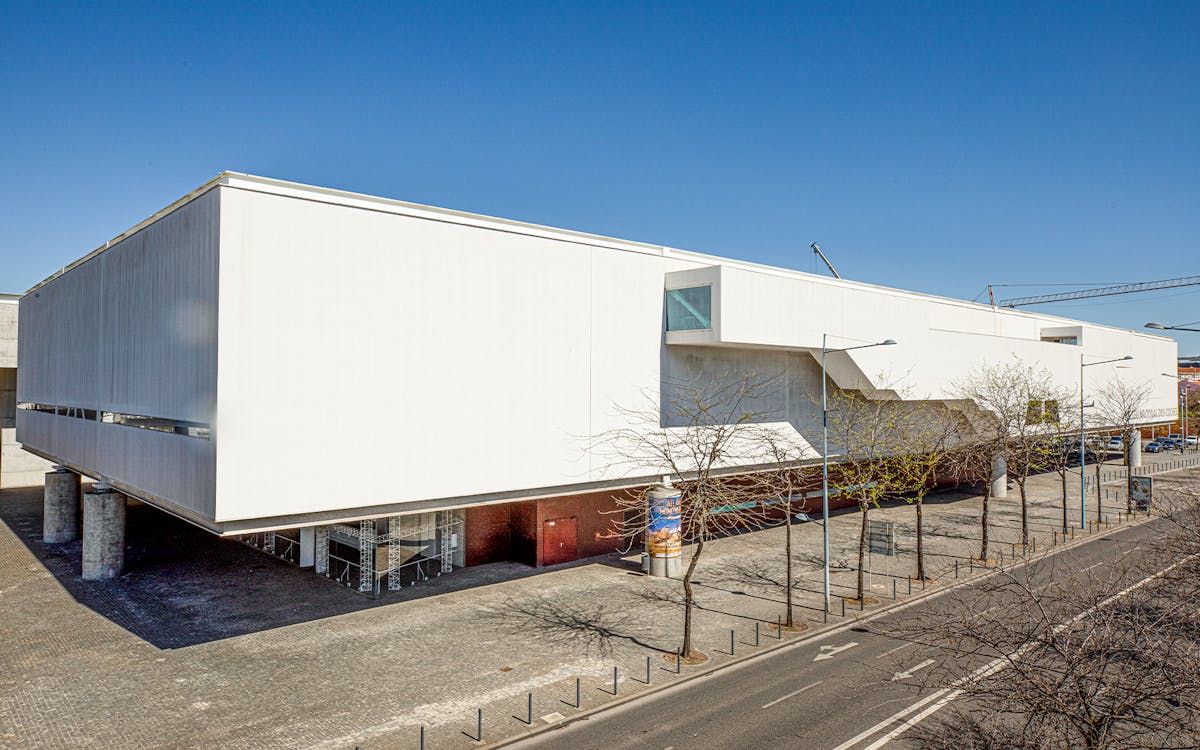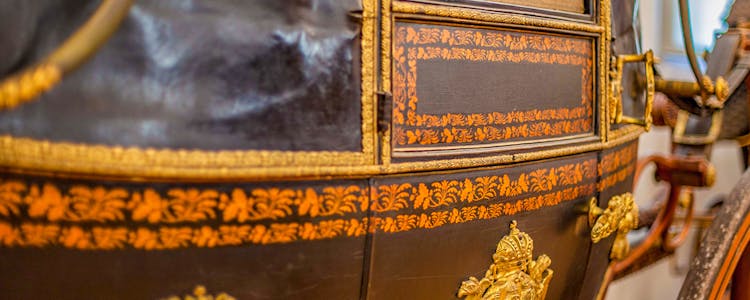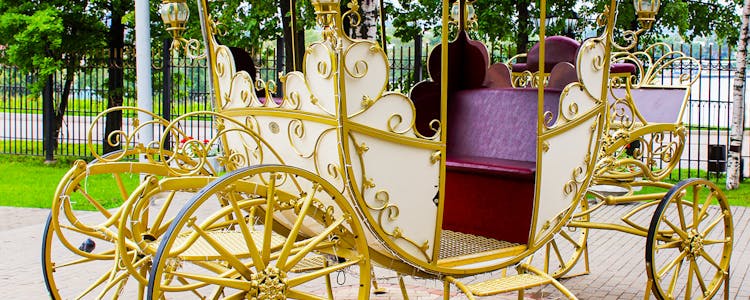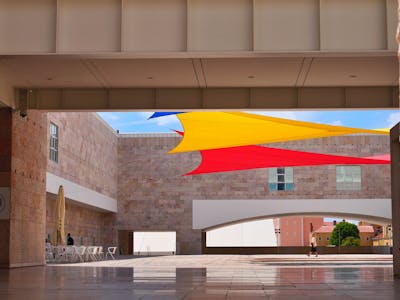Step into a time when carriages were more than mere vehicles; they were exquisite works of art, symbols of opulence, and a window into history. Lisbon's National Coach Museum beckons with a collection of beautifully preserved coaches from Italy, Portugal, France, Spain, Austria and England. It has one of the best collections of historical carriages anywhere in the world and is also one of the most visited museums in Lisbon!
National Coach Museum In A Nutshell



Getting There
Av. da Índia 136, 1300-300
Lisboa, Portugal
Get Directions
Opening Hours
10 AM to 6 PM
Closed on Mondays
What to Expect at National Coach Museum?
- Unique Collection: Explore a world-class collection of beautifully preserved coaches from the 16th to the 19th centuries, showcasing the opulence and craftsmanship of the era.
- Fascinating History: Discover the rich history behind each carriage. From royal processions to diplomatic gifts, these carriages have played significant roles in Portugal's history. Learn how they shaped the nation's culture and identity.
- Artistry and Craftsmanship: Marvel at the extraordinary attention to detail and artistry displayed in the ornate carvings, gilded embellishments, and hand-painted scenes.
- Mythological References: Look closely for mythological references in the carriages' designs. Discover gods, goddesses, and legendary creatures intricately woven into the ornate details, reflecting the cultural and artistic influences of the time.
Recommended National Coach Museum Tickets
National Coach Museum History
The National Coach Museum traces its roots back to 1905 when Queen Amélia established it within an old riding school. Originally envisioned to showcase the impressive collection of carriages belonging to the Portuguese royal family and nobility, the museum has evolved into a captivating repository of historical transport. Spanning from the late 16th to the 19th centuries, the diverse collection offers a comprehensive glimpse into the development of carriages across Europe, featuring notable pieces crafted in Italy, Portugal, France, Spain, Austria, and England. One of the museum's most treasured exhibits is a late 16th to early 17th-century travelling coach once used by Philip III of Spain during his journey from Spain to Portugal in 1619. The museum also boasts a remarkable assortment of Baroque carriages from the 18th century, adorned with paintings and extravagant gilt woodwork. Among these is a ceremonial coach gifted by Pope Clement XI to King John V in 1715, and three coaches used by the Portuguese ambassador to Pope Clement XI, crafted in Rome in 1716.

Highlights of National Coach Museum
1King Philip II's Travelling Coach
A true historical gem, the late 16th/early 17th-century travelling coach used by King Philip II of Portugal is a rare and remarkable exhibit. Transporting visitors back to a time of regal voyages, this coach provides insights into the complexities of royal travel during that era.

2Baroque Masterpieces
The museum's collection of Baroque carriages is an art lover's dream. Richly decorated with paintings and exuberant gilt woodwork, these 18th-century carriages are a visual feast. The ceremonial coach gifted by Pope Clement XI to King John V is worth particular mention.

3Coach of King João V
At the National Coach Museum, the must-see Coach of King João V astounds visitors with its imposing length of over 6 meters. Its extravagant design, abundant red and gold tones, and refined decoration offer a glimpse into the era of European courts and the rise of the Rococo style.

4The Coach of the Oceans
The Coach of the Oceans, a grand triumphal car is adorned in Roman-style with gold and red silk velvet. Part of the Portuguese Embassy's procession to Pope Clement XI in 1716, its captivating rear scene depicts the Atlantic and Indian Oceans converging, symbolizing the Cape of Good Hope crossing.

Best Time to Visit National Coach Museum
The best time to visit the National Coach Museum in Lisbon is in the spring or fall when the weather is pleasant and the crowds are smaller compared to the summer months. A visit during these seasons will allow you to comfortably explore the museum without feeling overwhelmed. Additionally, visiting the museum in the morning or late afternoon would be ideal, as it tends to be less crowded compared to the midday. This will give you the opportunity to fully appreciate the exquisite collection of coaches and carriages without any rush.
National Coach Museum Opening Hours
- Tuesday-Sunday: 10 AM to 6 PM
- Closed: Mondays, January 1, May 1, Easter Sunday, June 13, December 24 and 25
Getting There
Tram
Conveniently accessible by Tram, visitors can hop on line 15 to reach the National Coach Museum. The tram journey not only provides a scenic ride but also offers a glimpse of Lisbon's charming neighborhoods along the way.
Bus
Multiple bus lines connect to the museum, ensuring easy access for travelers. Visitors can choose from lines 14, 27, 28, 29, 43, 49, and 51, making it a convenient option to reach the museum from various parts of the city.
Train
For those arriving from other parts of Lisbon or even from Cascáis, the Belem train station on the Cascáis Line offers a direct route to the National Coach Museum.
Insider Tips to Visit National Coach Museum
- Visit the museum on weekdays during non-peak hours, such as early mornings or late afternoons.
- Get your tickets in advance by booking online to avoid any hassle while entering.
- Plan to spend at least a couple of hours at the museum to fully appreciate its extensive collection.
- Consider getting an audio guide, as it can offer fascinating insights into the history and significance of the carriages.
- Photography is usually allowed, but be mindful of flash photography and any specific restrictions in certain areas.
National Coach Museum Facts
- The National Coach Museum is not only a treasure trove of carriages but is also historically intriguing as it was originally a riding school for the royal family.
- The carriages in the museum often feature intricate and symbolic designs. From depictions of mythological figures to national emblems, each carriage tells a story that goes beyond mere transportation.
- The spectacular triumphal coaches displayed at the museum once embarked on a grand journey to the Vatican. They were part of the Portuguese Embassy's procession to Pope Clement XI, showcasing the nation's splendor and diplomatic ties with the Church.
- Preserving the carriages requires meticulous care. The museum employs a team of skilled artisans and conservators who work tirelessly to restore and maintain these priceless historical artifacts.
- The National Coach Museum boasts one of the largest and most diverse collections of carriages in the world. Its comprehensive range of carriages from different periods and regions make it a fascinating destination.
Restaurants Near National Coach Museum

SUD Lisboa is a chic venue with a terrace, infinity pool, and scenic river views. It offers local cuisine and innovative cocktails with a twist, creating a posh dining experience in Lisbon.

Indulge in a flavorful feast at Tasty Kebab. Savor aromatic coffee and relish in the Halal food options. Open late, the restaurant caters to night owls. Enjoy a diverse array of dishes, including a salad bar and delectable vegetarian choices.

At O Prado, savor the authentic flavors of Portuguese cuisine amidst a casual and cozy ambiance. Indulge in delicious dishes crafted with care, offering a delightful taste of Portugal's culinary heritage.
Places to Stay Near National Coach Museum
Things to Do Near National Coach Museum
FAQs
The National Coach Museum was established in 1905 by Queen Amélia of Portugal, making it over a century old.
Yes, skip the line tickets are highly recommended, especially during peak tourist seasons. They save time and ensure swift entry, allowing visitors to make the most of their museum experience.
The best mode of transport depends on your location. Tram (line 15), bus (lines 14, 27, 28, 29, 43, 49, and 51), and train (Belem, Cascáis Line) are all viable options with good accessibility to the museum.
The National Coach Museum is closed on Mondays and certain public holidays: January 1 (New Year's Day), May 1 (Labor Day), Easter Sunday, June 13 (Lisbon's Popular Saints Day), June 24 (Lisbon City Day), and December 25 (Christmas Day).
Yes, the museum provides washrooms for visitors. You can find restroom facilities on-site to ensure convenience during your visit.
While there is no specific dress code, it's recommended to wear comfortable clothing and shoes suitable for walking.







